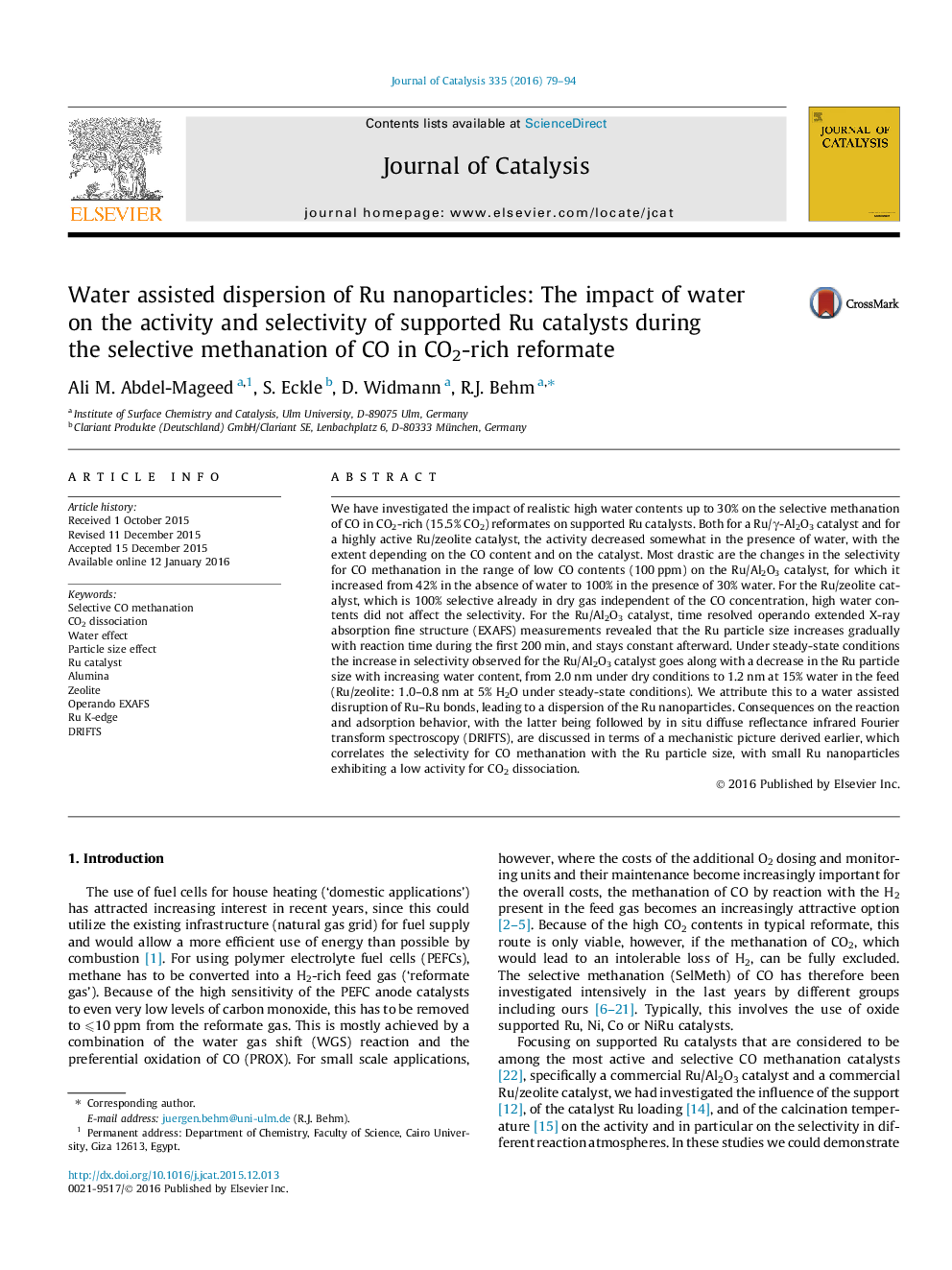| کد مقاله | کد نشریه | سال انتشار | مقاله انگلیسی | نسخه تمام متن |
|---|---|---|---|---|
| 60597 | 47538 | 2016 | 16 صفحه PDF | دانلود رایگان |

• Supported Ru catalysts are highly active for CO methanation in CO2 rich reformate.
• Addition of water drastically enhances the selectivity of Ru/Al2O3 for CO methanation.
• Increasing amounts of water result in decreasing steady-state Ru particle size.
• Increasing CO2 dissociation barrier with decreasing Ru particle size.
We have investigated the impact of realistic high water contents up to 30% on the selective methanation of CO in CO2-rich (15.5% CO2) reformates on supported Ru catalysts. Both for a Ru/γ-Al2O3 catalyst and for a highly active Ru/zeolite catalyst, the activity decreased somewhat in the presence of water, with the extent depending on the CO content and on the catalyst. Most drastic are the changes in the selectivity for CO methanation in the range of low CO contents (100 ppm) on the Ru/Al2O3 catalyst, for which it increased from 42% in the absence of water to 100% in the presence of 30% water. For the Ru/zeolite catalyst, which is 100% selective already in dry gas independent of the CO concentration, high water contents did not affect the selectivity. For the Ru/Al2O3 catalyst, time resolved operando extended X-ray absorption fine structure (EXAFS) measurements revealed that the Ru particle size increases gradually with reaction time during the first 200 min, and stays constant afterward. Under steady-state conditions the increase in selectivity observed for the Ru/Al2O3 catalyst goes along with a decrease in the Ru particle size with increasing water content, from 2.0 nm under dry conditions to 1.2 nm at 15% water in the feed (Ru/zeolite: 1.0–0.8 nm at 5% H2O under steady-state conditions). We attribute this to a water assisted disruption of Ru–Ru bonds, leading to a dispersion of the Ru nanoparticles. Consequences on the reaction and adsorption behavior, with the latter being followed by in situ diffuse reflectance infrared Fourier transform spectroscopy (DRIFTS), are discussed in terms of a mechanistic picture derived earlier, which correlates the selectivity for CO methanation with the Ru particle size, with small Ru nanoparticles exhibiting a low activity for CO2 dissociation.
Figure optionsDownload high-quality image (75 K)Download as PowerPoint slide
Journal: Journal of Catalysis - Volume 335, March 2016, Pages 79–94